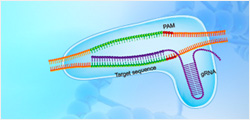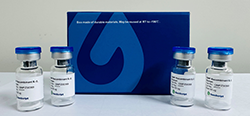The dysfunction of the blood-brain barrier (BBB) is one of the main pathological features of Alzheimer's disease (AD). Memantine (MEM), an N-methyl-d-aspartate (NMDA) receptor antagonist, has been reported that been used widely for AD therapy. This study was performed to demonstrate the role of the MEM in regulating BBB permeability in AD microenvironment as well as its possible mechanisms. The present study showed that LINC00094 was dramatically increased in Abeta1-42 -incubated microvascular endothelial cells (ECs) of BBB model in vitro. Besides, it was decreased in MEM-incubated ECs. Silencing LINC00094 significantly decreased BBB permeability, meanwhile up-regulating the expression of ZO-1, occludin and cla... More
The dysfunction of the blood-brain barrier (BBB) is one of the main pathological features of Alzheimer's disease (AD). Memantine (MEM), an N-methyl-d-aspartate (NMDA) receptor antagonist, has been reported that been used widely for AD therapy. This study was performed to demonstrate the role of the MEM in regulating BBB permeability in AD microenvironment as well as its possible mechanisms. The present study showed that LINC00094 was dramatically increased in Abeta1-42 -incubated microvascular endothelial cells (ECs) of BBB model in vitro. Besides, it was decreased in MEM-incubated ECs. Silencing LINC00094 significantly decreased BBB permeability, meanwhile up-regulating the expression of ZO-1, occludin and claudin-5. Furthermore, silencing LINC00094 enhance the effect of MEM on decreasing BBB permeability in AD microenvironment. The analysis of the mechanism demonstrated that reduction of LINC00094 inhibited Endophilin-1 expression by up-regulating miR-224-4p/miR-497-5p, promoted the expression of ZO-1, occludin and claudin-5, and ultimately alleviated BBB permeability in AD microenvironment. Taken together, the present study suggests that the MEM/LINC00094/miR-224-5p (miR-497-5p)/Endophilin-1 axis plays a crucial role in the regulation of BBB permeability in AD microenvironment. Silencing LINC00094 combined with MEM provides a novel target for the therapy of AD.,© 2019 The Authors. Journal of Cellular and Molecular Medicine published by John Wiley & Sons Ltd and Foundation for Cellular and Molecular Medicine.



































